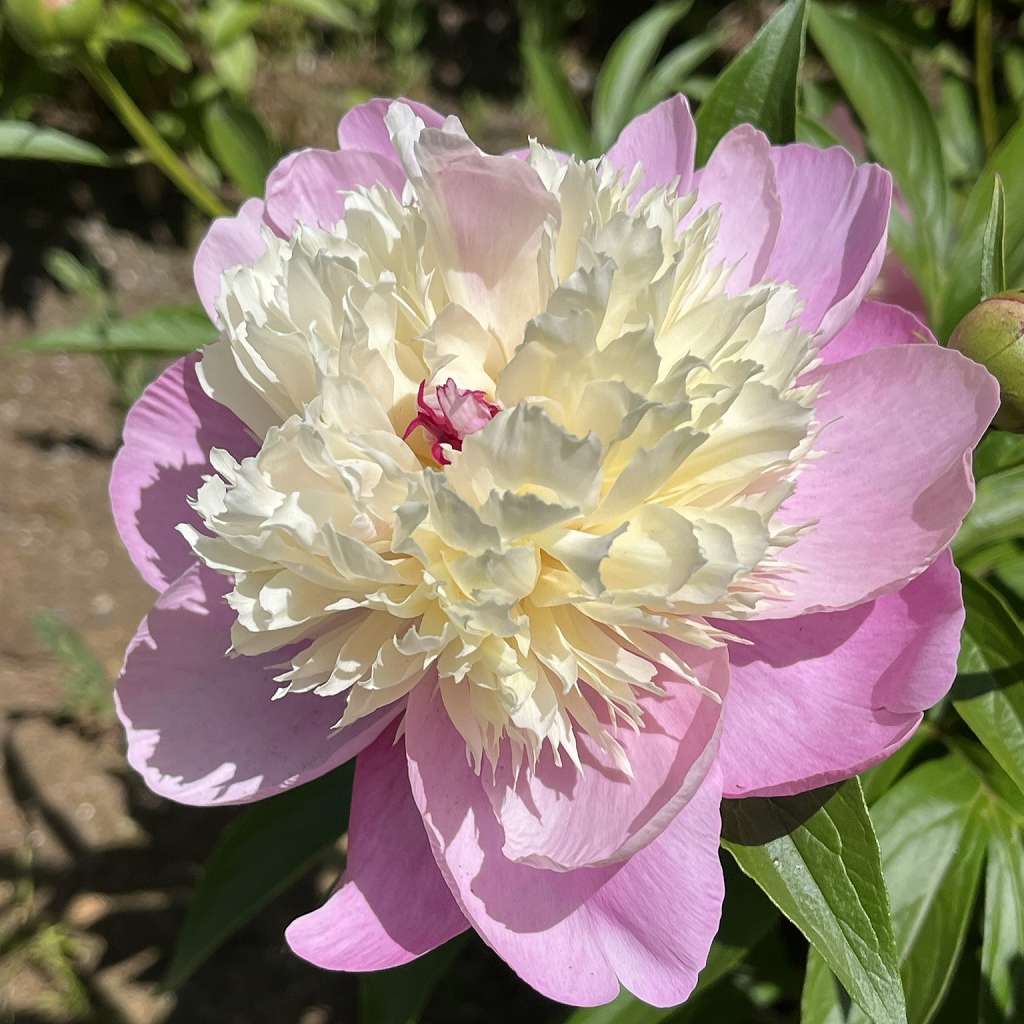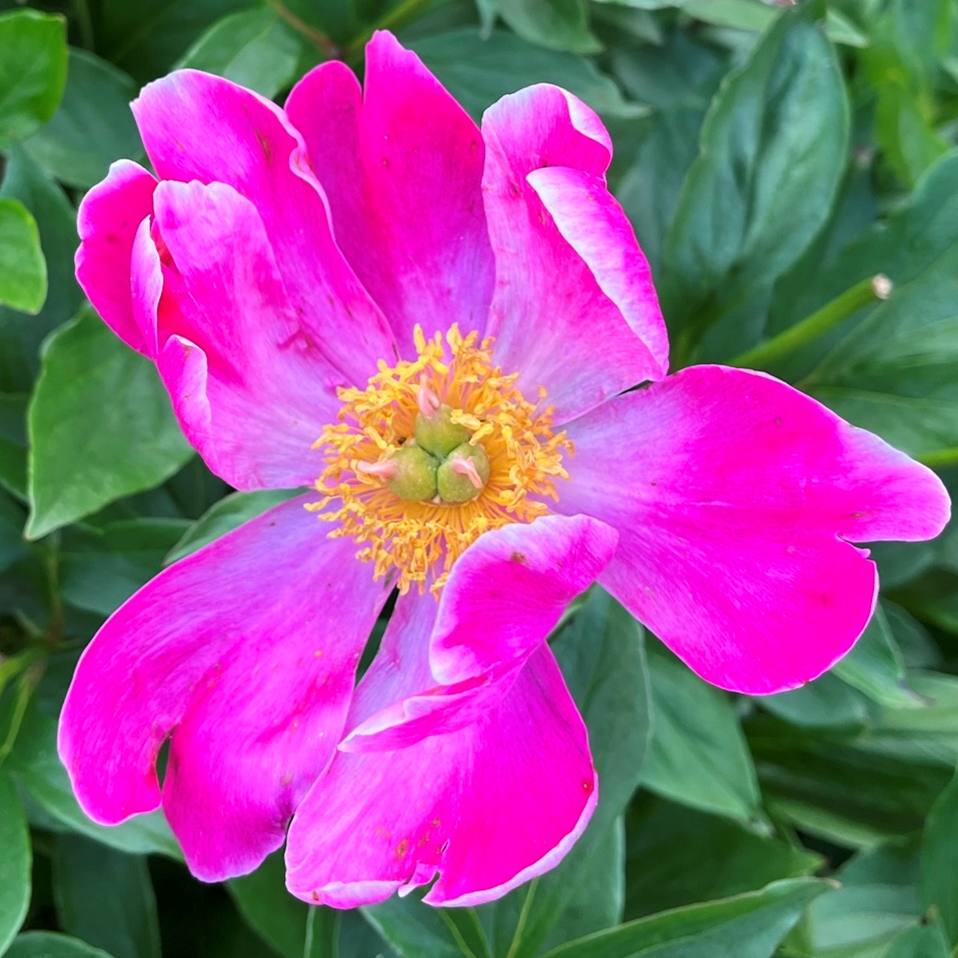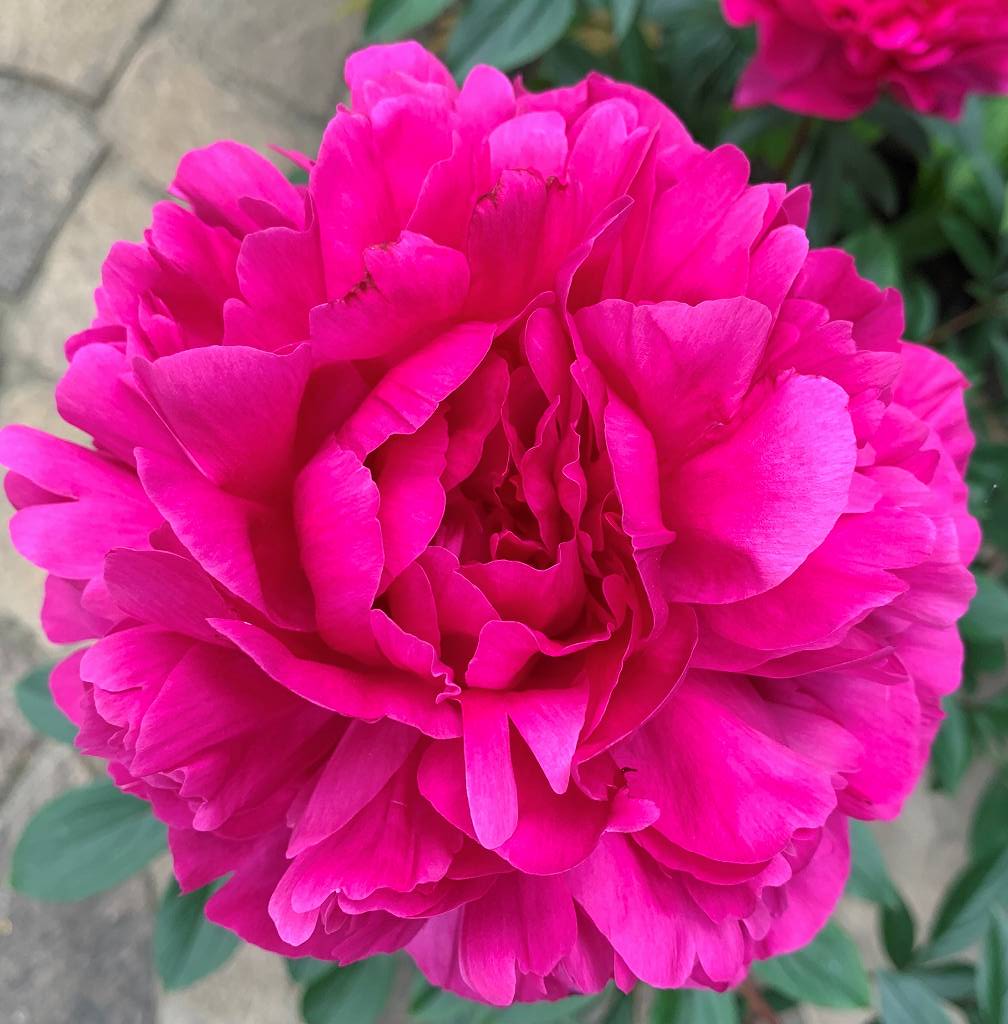シャクヤクは死者の国の王の傷をも癒す医術の神に由来する花。その一方で甘く爽やかに香り、「立てば芍薬」とも形容される優美な花です。
Chinese peony is a flower derived from the god of medicine that heals the wounds of the king of the dead. On the other hand, it has a sweet and refreshing scent, and is a graceful flower that is also described as “Standing style is as grass peony”.
【仮名】シャクヤク
【和名】芍薬
【英名】Chinese Peony
【学名】Paeonia lactiflora
【誕生】02/ 06, 04/ 24, 05/ 14, 05/ 19, 07/ 24
【開花】05, 06月
【花色】White, Pink, Red, Purple, Yellow, Orange
シャクヤク
シャクヤクの来歴

シャクヤクはボタン科の多年草です。中国北部、シベリア南東部、朝鮮半島などに自生し、古くから薬用植物として栽培。日本へは中国から渡来し、江戸時代には茶花など、観賞用としても親しまれました。欧州へは18世紀前半に伝播。英国やフランスを中心に品種改良が進みました。
シャクヤクの名前

シャクヤクの名前の由来は、味のよい薬を意味する漢名「芍薬」の音読み。もしくは、しなやかで優しい姿を意味する「綽約」です。また、ボタン属のラテン語「ペオニア」はギリシャ神話に由来。医術の神「ペオン」が芍薬の根で死者の国の王「プルートー」の傷を癒したからです。
シャクヤクの近縁

シャクヤクとボタンは近縁で花の外観がそっくりです。芍薬の特徴は草本で、葉に丸みとツヤがあり、蕾が丸く、花が甘く爽やかな香り。一方の牡丹は木本で、葉に切れ込みが入ってツヤがなく、蕾が尖り、花が匂いません。近年は両者を掛け合わせて作出された黄色系の品種も流通。
シャクヤクの形容

シャクヤクは金しべ咲き、翁咲き、冠咲き、手まり咲きなど色々。その美しさは「立てば芍薬、座れば牡丹、歩く姿は百合の花」と形容されます。シャクヤクは茎が分枝せず上に伸びて優美な花、ボタンは木が分枝して横に広がり華麗な花、ユリは茎葉が風に揺られて清楚な花だから。
シャクヤクの薬用

先の慣用表現は一般に美しい女性の喩えですが、別の解釈もあります。気が立つ女性にはシャクヤクの根を、座り込む女性にはボタンの根を、フラつく女性にはユリの根を用いると良いという意味。シャクヤクの根は収斂、消炎、鎮痛、抗菌、止血、浄血、抗痙攣作用のある生薬です。
シャクヤクの花言葉

シャクヤクの花言葉は「恥じらい」「謙遜」です。これは、恥ずかしがり屋の妖精が隠れている花だから、夕方になると花を閉じてしまうから、「芍薬のように顔を赤くして」という慣用表現に由来など。色別には、桃色が「はにかみ」、白色が「幸せな結婚」、赤色が「誠実」です。
Chinese Peony

Chinese peony is a perennial plant of the Paeoniaceae family. It grows naturally in northern China, southeastern Siberia, and the Korean Peninsula, and has been cultivated as a medicinal plant for a long time. It came to Japan from China and was popular as an ornamental item such as flowers for a tea ceremony during the Edo period. Propagated to Europe in the first half of the 18th century. Variety improvement has progressed mainly in the United Kingdom and France.
The origin of the name of chinese peony is the reading of the Chinese name “Shakuyaku”, which means a tasty medicine. Or, it is a “Shakuyaku” that means a supple and gentle figure. Also, the Latin word “Peonia” of the genus Paeoniaceae is derived from Greek mythology. This is because the god of medicine “Peon” healed the wounds of the king of the dead “Pluto” with the roots of peonies.
The chinese peony and tree peony are closely related and look exactly like the flowers. The characteristic of chinese peony is herbaceous, rounded and glossy leaves, round buds, sweet and refreshing scent of flowers. Tree peony is woody, which has notches in the leaves, is dull, has sharp buds, and does not smell flowers. In recent years, yellow varieties produced by crossing the two have also been distributed.
There are various kinds of chinese peony such as golden flowered, old man flowered, crown flowered, and hand-roll flowered. Its beauty is described as “Standing style is as grass peony, sitting as peony, walking style is lily”. Chinese peony is a graceful flower whose stems do not branch and grows upwards, Tree peony is a splendid flower where trees branch and spreads sideways, and Lily is a neat flower whose stems and leaves are shaken by the wind.
The above idiomatic expression is generally a metaphor for a beautiful woman, but there are other interpretations. It means that it is better to use the roots of chinese peonies for women who are upset, the roots of tree peonies for women who sit down, and the roots of lilies for women who are fluttering. chinese peony root is a herbal medicine with astringent, anti-inflammatory, analgesic, antibacterial, blood-stopping, blood-purifying, and anti-convulsant effects.
The flower language of chinese peony is “embarrassment” and “humility”. This is a flower that hides a shy fairy, so it closes in the evening, so it comes from the idiomatic expression “blush like a peony.” By color, pink is “Hashing”, white is “Happy Marriage”, and red is “Sincerity”.



